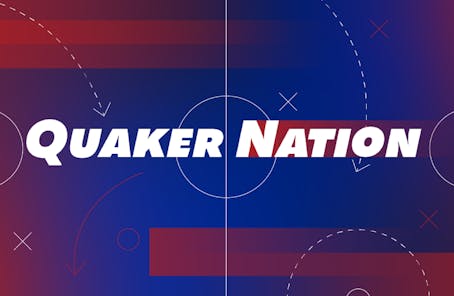Penn plays a leading role in the national initiative toward a new generation of Internet technology. From creating virtual classrooms to enabling virtual reality, Penn is steering the future of the information superhighway. Since last fall, the University has been a major player in the "Internet II" project -- a three- to four-year plan to jumpstart the country into the next era of Internet technology. Adopted as part of the White House's 1996 Next Generation Internet initiative, Internet II aims to improve the research side of what has become a largely commercialized Internet. Once completed, the project will have a profound impact on students, as high-speed networks will facilitate cooperative projects with students across the globe. "Internet II will open up the capability for students to take advantage of decentralized education," Telecommunications Professor David Farber said. Last October, representatives from 34 U.S. universities met in Chicago to affirm their commitment to the project. "Universities across the United States are trying to get their faculty and students on the upper level of technology," said Farber, a member of the President Clinton's Advisory Committee on Information Technology who is widely recognized as an Internet pioneer. "Part of our tradition is to innovate." Penn had a head start on its Internet II research -- the University was already connected to an extremely high-tech network of computer centers called the very high-speed Backbone Network Service, or "vBNS." Although Penn was one of 65 institutions to receive permission from the National Science Foundation to connect to vBNS, it was the first organization to successfully link up to the network when connection was established in July 1996, Physics Professor Robert Hollebeek said. Hollebeek said vBNS was "the first program evolving into an advanced network for the future." "This network is so fast that your computer can talk to other computers faster than you can store information on your own disc," he added. "vBNS is the vehicle by which we can roll out Internet II." On a smaller scale, Hollebeek used vBNS to connect schools involved in Penn's National Scalable Cluster Project. The project -- an attempt to combine the network, computing and storage components of the Internet -- links Penn, the University of Illinois at Urbana-Champaign and the University of Maryland at College Park. Data Communications and Computing Services Manager Deke Kassabian said he hopes to use this powerful network to help create Internet II. Project coordinators felt Internet II would be best utilized if "institutions within a geographic region get together at one point," he said. In response to this request, Penn combined with the University of Delaware and Rutgers and Princeton universities to form "MAGPI" -- Mid-Atlantic GigaPOP for Internet II. A GigaPOP is a central "Point of Presence" that carries data at extremely high speeds. "We are one of the GigaPOPs that are most firmly along," Kassabian added. "Most are still in the planning stages." Farber said working with surrounding universities was a positive experience for Penn. "We've finally paid attention to the fact that we have neighbors," he said. The project seeks to have 12 to 20 institutions connected by the end of the year, and the majority of the 34 founding universities connected by the end of 1998. But even when all the schools are connected to Internet II, Kassabian said only about 15 percent of traffic will go that route -- the majority of Internet users will continue to use the commercial Internet as it exists today. The typical student uses the Internet for simple information gathering rather than the in-depth research that Internet II will provide, he explained. But Farber has faith that all students will eventually take advantage of Internet II. "The network will impact the sciences first but it will then start to walk its way into other parts of the university," he said. And the rich information available through Internet II will not be limited to universities. "We will eventually reach out to the rest of the community," Farber said.
The Daily Pennsylvanian is an independent, student-run newspaper. Please consider making a donation to support the coverage that shapes the University. Your generosity ensures a future of strong journalism at Penn.
DonatePlease note All comments are eligible for publication in The Daily Pennsylvanian.







